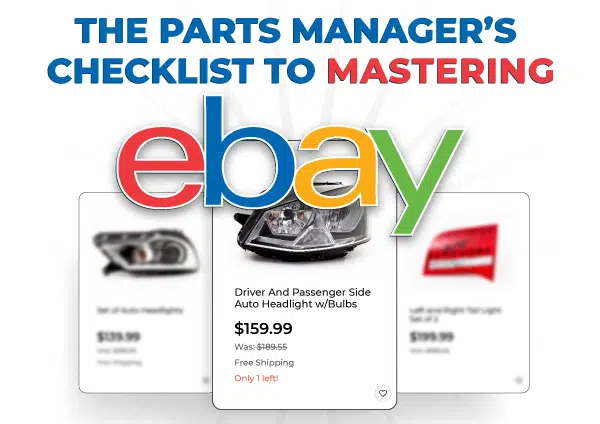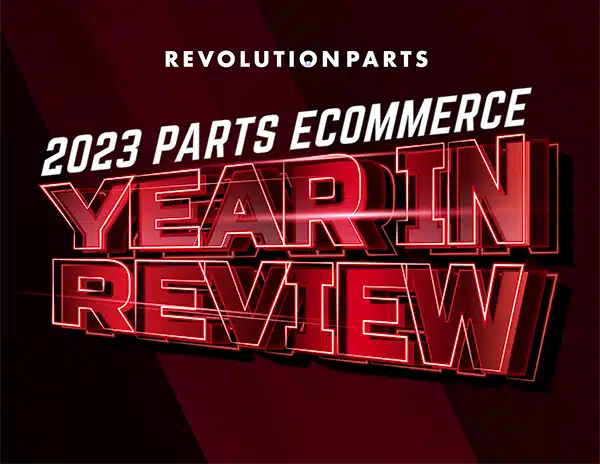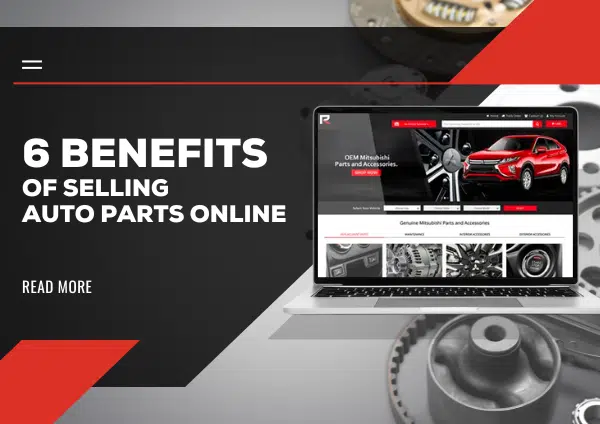Did you know that 66% of customers will shop with their preferred brand, even if an alternative offers a better price? (Source: Crowdtwist)
Customer service can be a deal breaker when it comes to making sales. When you have a loyal following, it’s almost like guaranteed profit from those people, since you can count on them to buy from you most or all of the time. You don’t have to spend time and marketing dollars to bring them to your parts website.
Loyal customers that shop with you every time can have a huge impact on the success of your parts website. And we’re not just saying that.
By the numbers:
- On average, loyal customers are worth up to 10 times as much as their first purchase (White House Office of Consumer Affairs)
- 3 in 5 Americans (59%) would try a new brand or company for a better service experience. (American Express Survey, 2011)
- In 2011, 7 in 10 Americans said they were willing to spend more with companies they believe provide excellent customer service. (American Express Survey, 2011)
1. Considering online customers to be a low priority.
Even though you can’t see your online customers, it doesn’t make them any less human. When it comes to handling the details of your parts website, it’s absolutely essential that you treat that as you would any other customer.
That means handling their order as quickly and efficiently as possible. Block off some time during your day to package and ship orders—don’t push it off for days at a time.
2. Ignoring phone calls and emails.
How would you feel if you walked into a retail store and tried to find an employee to help you, but they all completely ignored you? That’s how online customers feel when you ignore their phone calls or emails.
When the phone rings, answer it. If your entire parts team is busy with other customers, then call the phone customer back when you have a free hand.
As for emails, you don’t need to give an instant response. Most customers expect an answer within 1 business day, so aim for that time frame as a best practice. For commonly asked questions, you can set up some email templates ahead of time so you don’t need to type each email up from scratch.
Remember: the sooner you talk to that customer, the higher the chance that they’ll buy from your parts website. If you ignore them or take too long to respond, they’ll look for an answer somewhere else.
3. Refusing to share contact info.
A lot of dealers don’t want to list their dealership contact info on their page. Sometimes it’s because they want to hide their dealership’s identity. Other times, they just don’t want to deal with online customers because they’re afraid of being flooded with phone calls and emails.
Worried about the phone ringing off the hook?
In all honesty, you don’t have to worry about mass amounts of customer questions. It will only be every now and then that someone will need help with their order via phone or email.
Worried about your dealership identity?
Sometimes, parts managers are worried about associating their parts website with their dealership website. They’re concerned that local customers will be upset to see lower prices online compared to the parts counter.
We wrote an entire article about why linking your parts website and dealership website is a really good idea. The article also goes into detail about how to avoid upsetting customers, and what to do if a customer enters the parts website to ask about your lower online prices.
If you’re still concerned, don’t be. There’s no rule that you need to use your exact dealership contact info. It’s easy to create a new phone number and email address just for your parts website.
4. Not creating strong store policies.
It’s ALWAYS a smart idea to create clear store policies for shipping, returns, and cancellations. Store policies can help you establish rules and expectations with your customers so everyone stays on the same page.
In the case of return policies, it can even help customers avoid ordering the wrong part (and reduce the amount of returns processed)!
Discover how to build your policy pages:
- The 3-Point Guide to Creating the Perfect Shipping Policy
- How to Set up your Return Policy and Reduce Returns
But remember: store policies are not a one-way street. You need to uphold your side the promise, too. If you tell customers in a shipping policy that all orders will be fulfilled in 1-2 business days, then you absolutely MUST fulfill orders in 1-2 business days.
RELATED:6 Mistakes with Handling Returns that are Eating Into your Profit Margins
5. Being inflexible with your own rules.
We just talked about how establishing rules in your shipping, return, and cancellation policies can protect your margins. At the same time, though, there are situations when you should be flexible.
For example, if your parts department accidentally ships out the wrong part, then you should offer to pay return shipping or partial return shipping when the customer asks for a return. The incorrect part isn’t your customer’s fault.
They might already be upset that they didn’t get the part they ordered. If you offer to pay for some or all of the return shipping, it will go a LONG way in turning an upset customer into a very happy one.
Use your judgment! Let’s say the customer provided an accurate VIN but still ordered the wrong item by accident. If the item is relatively inexpensive to ship, then you might consider offering to cover it. They did provide a VIN, after all, and made an honest attempt to find the part they needed.
In short, you can consider being more lenient in these situations:
- Your parts team made a mistake.
- The customer provided an accurate VIN.
- The shipping cost is very low.
- The customer is being very friendly, understanding, and/or apologetic on the phone.
By paying just a few dollars for their shipping, you might turn them into a loyal customer for life—and generate hundreds in sales from them in the months and years to come.
Great customer service doesn’t have to mean handwritten letters and gifts in the mail. It’s as simple as picking up the phone and treating your customer like a human being. Help them out, be honest, and treat them how you would want to be treated during a phone call.
When you have great customer service, it can help you trump your online parts competition—even if they have a lower price.
The best part? Customer service doesn’t have to cost anything except a little of your time, and it will always pay off.





